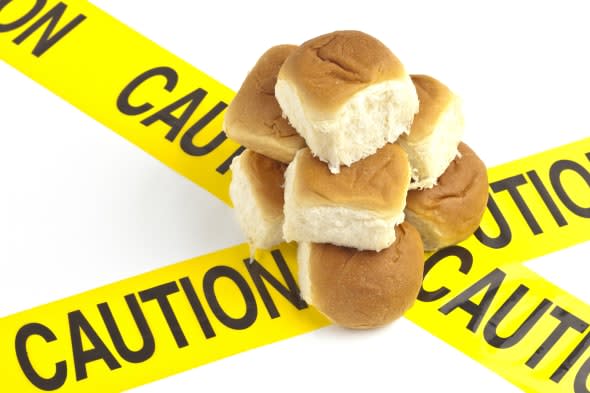Could you have wheat intolerance?

Around 45 per cent of people in the UK suffer from food intolerance, with wheat being one of the most common. Discover the difference between wheat intolerance, wheat allergy and coeliac disease, and get advice and recipe ideas to help you go wheat and/or gluten-free...
Related Searches
What is wheat intolerance?
People with this particular kind of food intolerance experience a range of symptoms after eating products containing wheat. Symptoms can include tummy ache, wind, bloating, diarrhoea and/or constipation and can develop several hours or even days later. People also report general aches, mood swings, headaches, fatigue and eczema. For this reason, wheat intolerance can be hard to diagnose and is frequently confused with other conditions, such as irritable bowel syndrome (IBS).
To complicate matters further, many people are intolerant to several different foods, making it difficult to identify which ones are causing the problem. Wheat causes problems for three main groups of people: those with wheat intolerance, wheat allergy, and coeliac disease.
%VIRTUAL-AFCSponserAds%Wheat intolerance, wheat allergy and coeliac disease
People with a genuine food allergy are few and far between (1 to 2 per cent of the UK population). If you have a food allergy, eating a tiny amount of the offending food can cause a severe reaction, often within minutes, and can be life threatening. A standard blood or skin prick test will tell you if you have a wheat allergy (these are unable to show whether you have wheat intolerance or not).
Celiac disease
Although described as a type of wheat intolerance, coeliac disease is caused by an autoimmune reaction (where the body attacks itself) to the protein gluten, which is found in wheat, rye and barley. Classic symptoms include weight loss, vomiting, diarrhoea, bloating, fatigue, and mouth ulcers.
Eating just a small amount of gluten can damage the lining of the small intestine, greatly reducing the gut's ability to absorb nutrients from food. For this reason, people with coeliac disease must follow a 100% gluten-free diet. Coeliac disease affects one in 100 people in the UK, with another 500,000 people thought to be sufferers without knowing it. Fortunately, there are blood tests to diagnose the condition.
Wheat Intolerance Diet
If you are wheat intolerant you will want to avoid eating wheat, but that can be easier said that done. Wheat is found in a wide range of everyday foods including pasta, bread, cereals, cakes, and beer. Wheat flour is also added to a many products, including ketchup, soy sauce, processed meat and ice cream. Luckily, there are many wheat and gluten-free products available, which makes it easier to find alternatives. Look for foods that are gluten and wheat free, as those labelled gluten-free only may not be wheat-free.
Most flours used in everyday baking are made from wheat but it is possible to buy alternatives from health food shops and larger supermarkets, such as maize (corn) flour, potato flour, rice flour, Soya flour, millet, buckwheat, and quinoa.
Quinoa is wheat and gluten free and makes a delicious and healthy alternative to pasta. It can also be prepared as flakes and eaten as a breakfast cereal. High in quality proteins, vitamins, minerals and amino acids, including quinoa in your diet is one way to help ensure you get the nutrients you may lose when avoiding foods containing wheat and gluten.
Are you wheat-intolerant? Share your wheat and gluten-free tips in the comments below...




